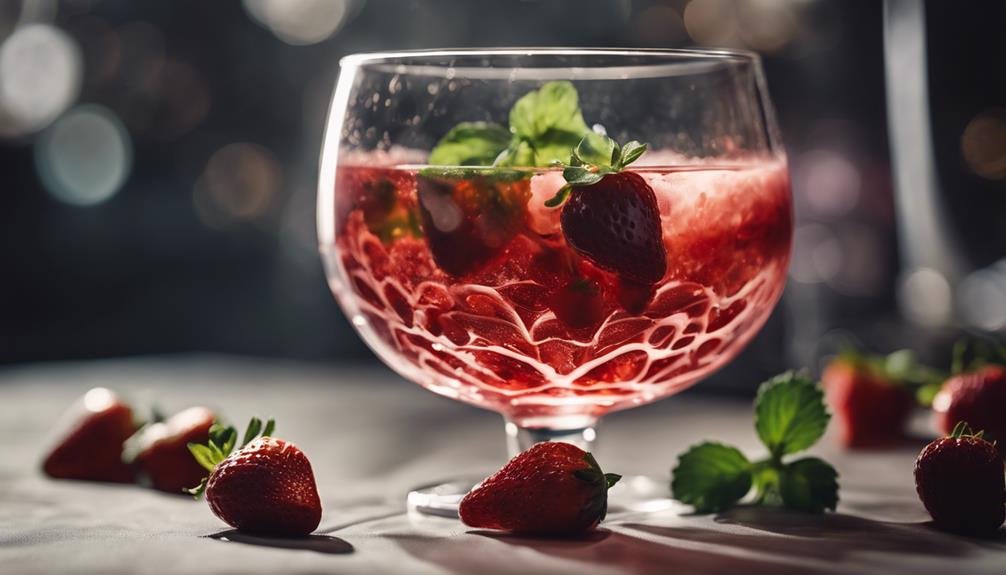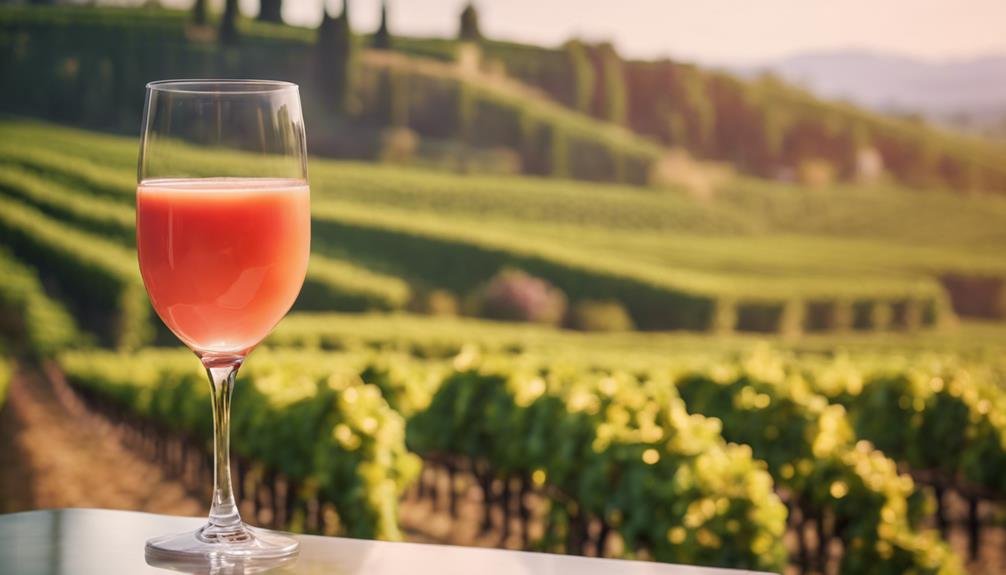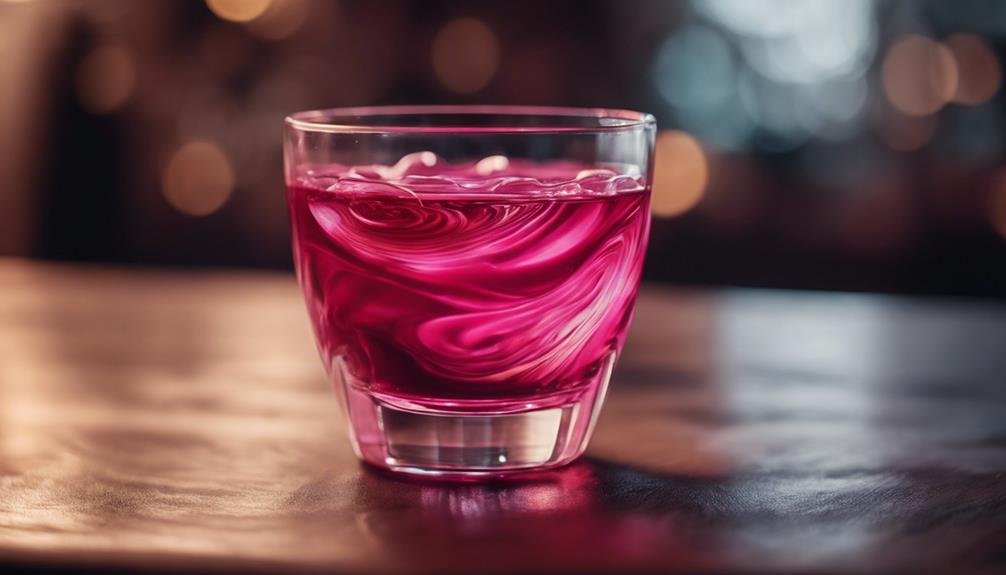Tavel Rosé stands out for its deep pink color and complex flavor profile, blending strawberry, cherry, watermelon, and floral notes. Made from Grenache, Cinsault, Syrah, and Mourvedre grapes, it boasts high alcohol content and aging potential. Perfect with duck, quail, pork, and salmon, its production involves meticulous fermentation and aging processes. Tavel's popularity has surged due to its bold fruit flavors and versatility, offering a distinct rosé experience akin to red wines. Appreciated for its depth and complexity, it provides a rich tasting experience with a balance of lightness and savory notes. Experience the unique blend of red wine richness and rosé refreshment.
Tavel Rosé: A Bold Choice
Is Tavel Rosé truly a bold choice among the world of rosé wines due to its unique characteristics and historical significance?
Tavel rosé, known for its deep pink to salmon color, offers a complex flavor profile with aromas of strawberry, cherry, watermelon, and floral notes. This wine, made primarily from Grenache, Cinsault, Syrah, and Mourvedre grapes, stands out for its high alcohol content and aging potential, developing savory, nutty flavors over time.
Tavel rosé's boldness pairs exceptionally well with dishes like duck, quail, pork, and salmon, making it a versatile choice for food pairings. Its ability to age gracefully adds to its allure, appealing to both connoisseurs and casual wine enthusiasts looking for a unique and sophisticated option in the world of rosé wines.
Production Insights and Techniques
Exploring the intricate production methods and techniques employed in crafting Tavel rosé reveals the meticulous artistry behind this unique wine.
Production Insights and Techniques:
- Grape varietals, fermentation: Tavel rosé is primarily made from a blend of Grenache, Cinsault, Syrah, and Mourvedre grapes. The grapes undergo a carefully monitored fermentation process to extract the desired flavors and colors.
- Aging process, climate influences: Tavel rosé's aging process plays an essential role in developing its bold and complex characteristics. The warm climate of southern France where these grapes are grown influences the sugar content and ultimately the flavor profile of the wine.
- Craftsmanship and attention to detail: The production of Tavel rosé requires skillful blending of grape varietals, precise fermentation techniques, and strategic aging processes to achieve the signature characteristics that set it apart from other rosé wines.
Unveiling Tavel Rosés Flavor Profile

Revealing the intricate flavor profile of Tavel rosé wines offers a captivating insight into the rich tapestry of aromas and tastes that define this uniquely bold and complex varietal. When exploring acidity in Tavel rosés, you'll encounter a fine balance between the wine's vibrant acidity and its luscious fruit flavors, creating an invigorating and dynamic sensation on the palate. Concerning food pairings, Tavel rosé's robust character makes it an excellent match for a wide range of dishes. Its versatility allows it to complement savory options like duck, quail, and pork, as well as richer fish like salmon. The acidity in Tavel rosé also makes it a great partner for various cheeses, salads, and even spicy cuisines.
| Acidity in Tavel Rosé | Food Pairings |
|---|---|
| Vibrant and invigorating | Duck, quail, pork |
| Versatile and dynamic | Salmon, cheeses |
| Complements spicy dishes | Salads |
The Evolution of Tavels Popularity
Over time, the changing preferences in the wine industry have influenced the trajectory of Tavel's popularity, indicating a significant shift in consumer tastes. This evolution has been driven by several key trends and market preferences:
- Lighter Rosés on the Rise: Recent years have witnessed a surge in the popularity of lighter rosé wines, challenging the dominance of bolder varieties like Tavel.
- Demand for Versatility: Despite this shift, Tavel continues to stand out for its bold summer fruit flavors, making it a versatile option that pairs well with a wide range of dishes.
- Recognition for Uniqueness: Tavel is esteemed for its ability to match the qualities of red wines while offering a distinct rosé experience, appealing to wine enthusiasts seeking complexity in their choices.
Appreciating Tavel Rosés Complexity

Exploring the intricate layers of Tavel rosé reveals a tapestry of flavors and characteristics that enchant discerning wine enthusiasts. Tavel rosés are renowned for their depth and complexity, offering a sensory journey that unravels with each sip.
When exploring nuances, Tavel rosé stands out for its bold fruit flavors, elevated alcohol content, and ability to develop savory notes over time. Tasting comparisons often highlight Tavel rosé's unique position between traditional rosés and red wines, showcasing a balance of lightness and complexity that intrigues the palate.
The intricate blend of Grenache, Cinsault, Syrah, and Mourvedre in Tavel rosé creates a symphony of flavors that pair exquisitely with a variety of dishes, making it a versatile and captivating choice for wine enthusiasts seeking a rich tasting experience.
Frequently Asked Questions
What Makes Tavel Rosé Stand Out From Other Rosé Wines?
Tavel rosé stands out due to its unique flavor profile with notes of red berries, watermelon, and a hot sensation from its high alcohol content. Its ability to age well, influenced by the terroir and production methods, adds to its distinction among rosé wines.
How Does the Climate in Southern France Influence Tavel Rosé Production?
The climate in southern France greatly influences Tavel rosé production. The region's warm weather and well-drained soils contribute to high sugar levels in grapes like Grenache, Cinsault, Syrah, and Mourvedre. Viticulture techniques and harvest timing are essential for quality.
Why Do Tavel Rosé Wines Have a Higher Alcohol Content?
Tavel rosé wines have a higher alcohol content due to the warm climate in southern France, promoting the development of grapes with elevated sugar levels. This results in a rich flavor profile with red berries, watermelon, and a notable hot sensation on the palate.
What Are the Key Food Pairings That Complement Tavel Rosé?
Tavel rosé complements savory dishes like duck and quail, enhancing their flavors. Its bold summer fruit notes can stand up to spicy cuisines such as pork and salmon dishes. A versatile wine that pairs well with a variety of foods.
How Does Tavel Rosé Bridge the Gap Between Rosé and Red Wines?
Tavel rosé bridges the gap between rosé and red wines by offering a unique blend of complexity and boldness. With its deep color, high alcohol content, and savory flavors, Tavel showcases the best of both wine characteristics.
Conclusion
To sum up, Tavel rosé stands out as a bold and complex choice in the world of fine wines. With its rich flavors, intricate aromas, and remarkable aging potential, this wine continues to captivate enthusiasts and connoisseurs alike.
The unique production methods, distinctive characteristics, and enduring popularity of Tavel rosé all contribute to its esteemed reputation in the domain of rosé varietals.
Cheers to the multifaceted allure of Tavel rosé!
